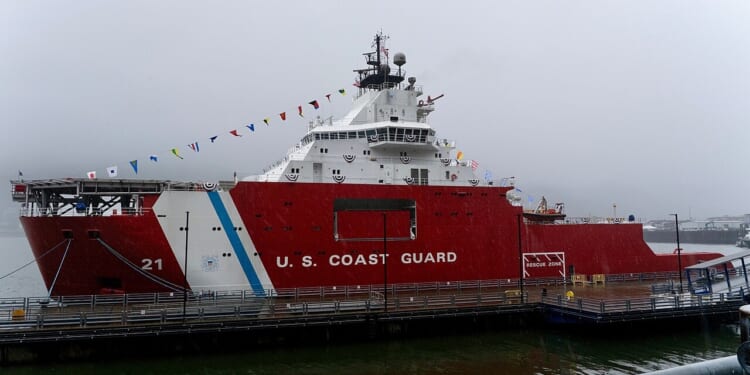USCGC Storis is a stopgap until the new “Polar Security Cutters” enter service. From the first deployment, it seemed to have gotten the job done.
The United States Coast Guard’s newest icebreaker returned to its home port on Friday, completing a “112-day inaugural patrol,” the service announced. The USCG Cutter Storis (WAGB-21) conducted an Arctic patrol north of the Bering Strait before returning to Seattle last Friday.
The maiden patrol was no pleasure cruise. WAGB-21 was deployed as part of Operation Frontier Sentinel, a combined United States Navy, US Coast Guard, and Canadian Armed Forces program “designed to meet presence with presence in response to adversary activity” in the Arctic region. Since July, the US Coast Guard has been monitoring the movements of Chinese-flagged research vessels operating near the United States Extended Continental Shelf (ECS), north of Alaska.
The Storis: America’s Second-Hand Icebreaker
USCGC Storis was formally commissioned into the Coast Guard in Juneau, Alaska, on August 10, 2025. It is the first polar icebreaker that the Coast Guard, a branch of the Department of Homeland Security (DHS), has received in more than 25 years.
As previously reported, the vessel began its life as the oilfield supply ship and icebreaking tug Aiviq. It was acquired by the Coast Guard last December after Royal Dutch Shell abandoned its plans to conduct drilling operations in the Arctic Ocean. The ship spent the first half of this year undergoing modifications that enhanced its communication and defense capabilities.
The ship has not been without problems, including an incident where it ran aground following a 2013 storm. However, the USCG has been desperately in need of icebreakers, with just two aging vessels in service. The US Navy operates no icebreakers, instead relying on the Coast Guard to handle clearing ice in the Arctic.
The future fleet of Polar Security Cutters has been delayed, and the first of a planned eight, USCGC Polar Sentinel (PSC-1), is now being built by Bollinger in Louisiana and is scheduled for delivery in 2028.
USCGC Storis is a stopgap until the PSCs enter service. From the first deployment, it seemed to have gotten the job done.
Traveling from Pascagoula, Mississippi, where it departed on June 1, the icebreaker has carried out a variety of operations, including weapons training while establishing new “operational and administrative programs.” It also took part in “multiple community outreach events” that included six port calls.
“In the span of a few months, this crew has gained proficiency in the basics of operating the ship and we were ready to challenge ourselves,” explained Capt. Corey Kerns, commanding officer of the new icebreaker.
With the vessel back in Seattle, it will next undergo additional training and evaluations of its systems before its next deployment.
“Storis is different than most Coast Guard cutters, and this crew is proud and excited to demonstrate its value to the service and the nation,” said Kerns, adding, “We still have a lot of training to do for our USCG crew to be ready to take full responsibility of the ship and will continue to work closely with our civilian shipmates to get us ready.”
The icebreaker will be temporarily based in the Emerald City until construction is completed on the new facility for the Coast Guard’s fleet of polar icebreakers in Juneau. However, construction has yet to begin.
The Icebreaker’s Main Job Will Be Watching China
USCGC Storis will likely be very active in the Arctic, a region the Coast Guard accurately described as “a zone of strategic global competition.”
Although China isn’t actually an “Arctic nation” and has no territorial claims to the far north, Beijing has viewed the region as a new “crossroads of the world,” one that could provide new shipping routes as it becomes ice-free during the summer months in the coming decades.
Since July, the Coast Guard has been monitoring the movements of the Chinese-flagged vessel Ji Di and the Liberia-flagged Zhong Shan Da Xue Ji Di, both reported to be approximately 200 miles offshore of Utqiagvik, the most northernmost American town. As noted, the vessels were operating within the ECS, designated under the United Nations Convention on the Law of the Sea as essentially within the exclusive economic zone (EEZ) of the United States.
About the Author: Peter Suciu
Peter Suciu has contributed over 3,200 published pieces to more than four dozen magazines and websites over a 30-year career in journalism. He regularly writes about military hardware, firearms history, cybersecurity, politics, and international affairs. Peter is also a contributing writer for Forbes and Clearance Jobs. He is based in Michigan. You can follow him on Twitter: @PeterSuciu. You can email the author: [email protected].
Image: Wikimedia Commons.


















